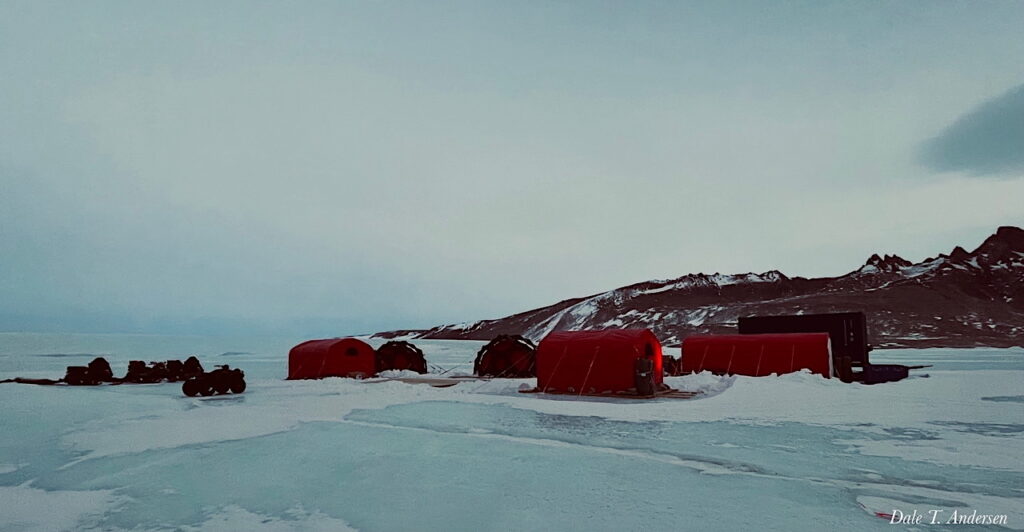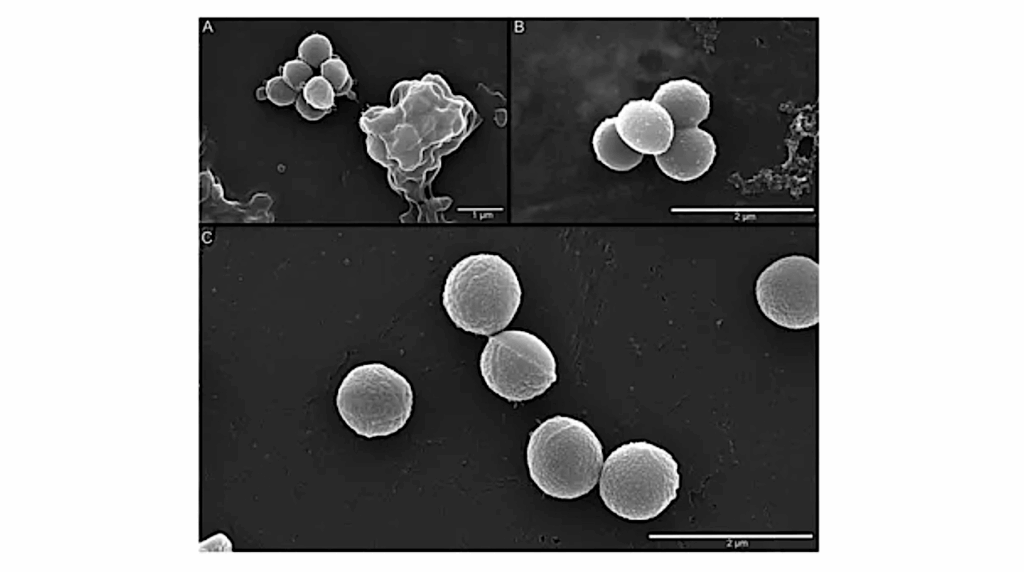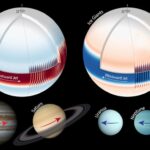Now Reading: CO Desorption From Interstellar Icy Grains Induced By IR Excitation Of Superhydrogenated PAHs
-
01
CO Desorption From Interstellar Icy Grains Induced By IR Excitation Of Superhydrogenated PAHs
CO Desorption From Interstellar Icy Grains Induced By IR Excitation Of Superhydrogenated PAHs
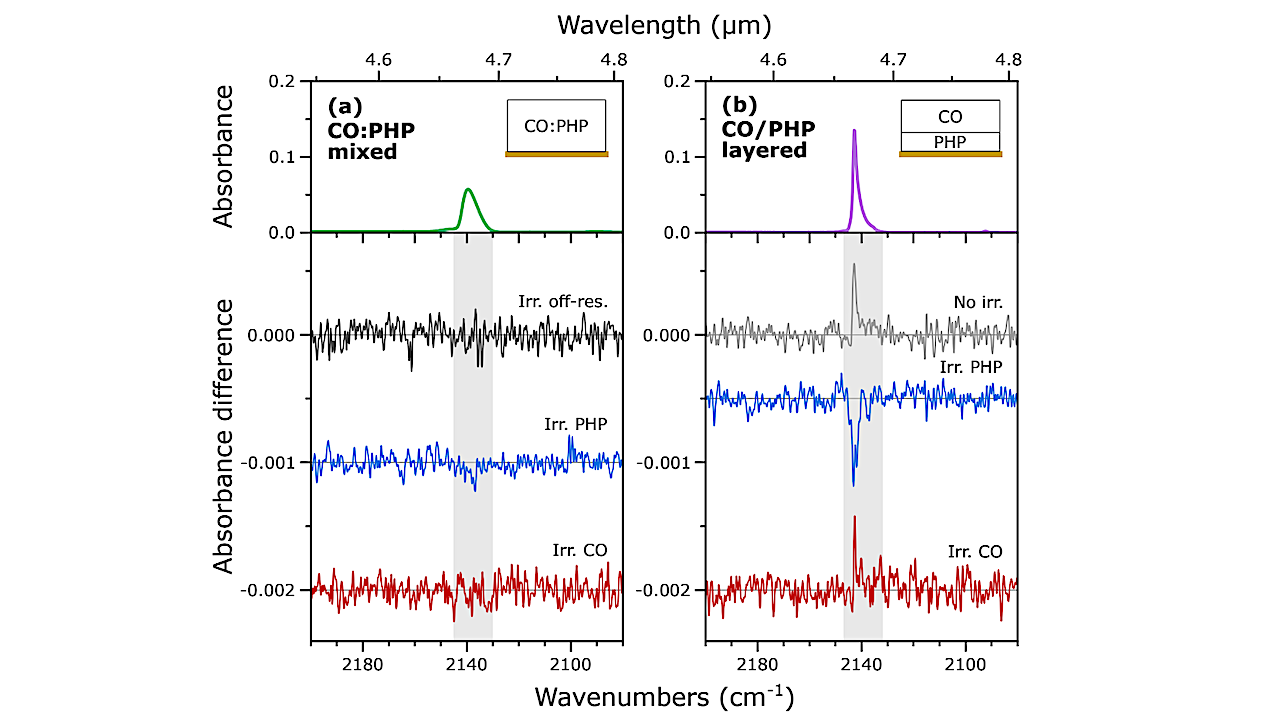
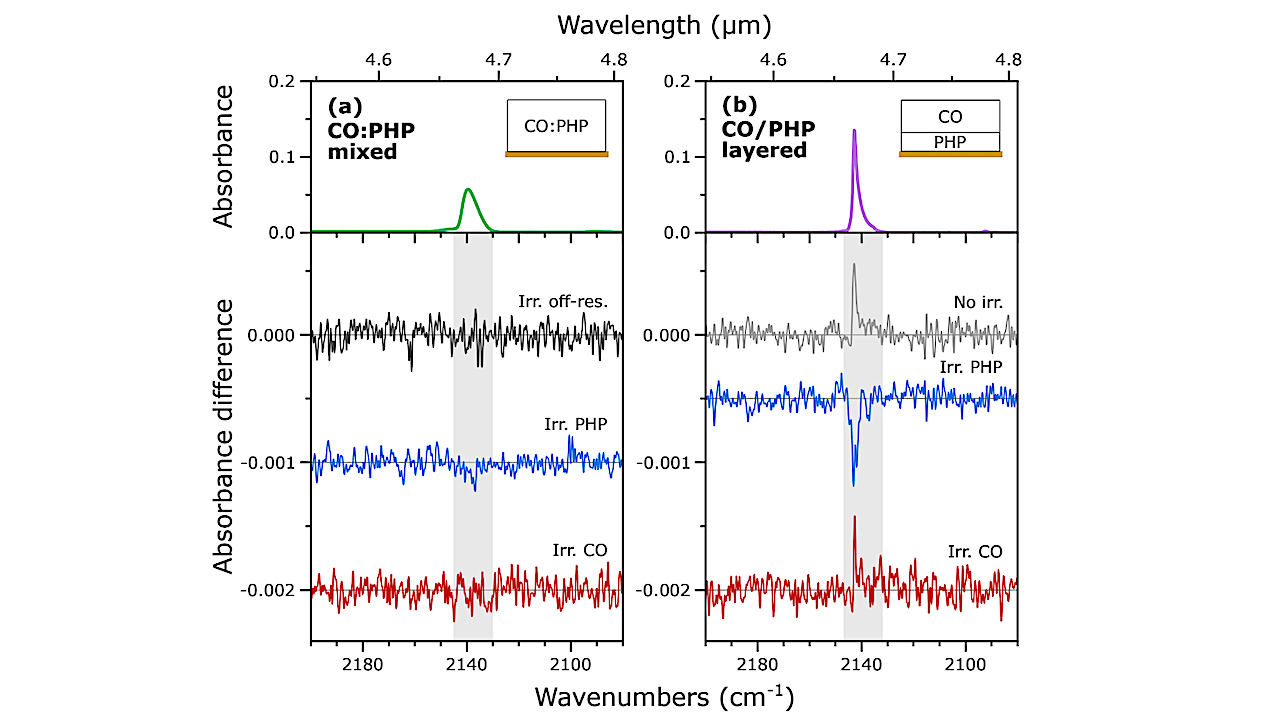
RAIR spectra (top) and difference spectra (bottom) for irradiation of the (a) CO:PHP mixed ice and (b) CO/PHP layered ice, focusing on the region around the CO stretching mode. The CO peak shape is different for the mixed and layered ices but represents the same total area and CO column density. The difference spectra represent the irradiations for which QMS data are shown in Fig. 2 and Appendix Fig. C.1, with the band irradiated denoted above each spectrum. The difference spectrum for a wait time of 1 min without irradiation for the layered ice (gray) indicates continuous CO deposition. Each difference spectrum has been baseline corrected by subtracting the mean value in the displayed range, excluding the shaded region around the CO band, and has been offset for clarity, represented by horizontal lines. The off-resonance irradiation energy was Eirr = 56 mJ. — astro-ph.GA
Infrared (IR) radiation dominates dense, interstellar clouds, yet its effect on icy grains remains largely unexplored.
Its potential role in driving the photodesorption of volatile species from such grains has recently been demonstrated, providing a crucial link between the solid state reservoir of molecules and the gas phase.
In this work, we investigate IR-induced photodesorption of CO for astrophysically relevant ice systems containing perhydropyrene (PHP). This fully superhydrogenated version of pyrene is used as an analogue for large carbonaceous molecules such as polycyclic aromatic hydrocarbons (PAHs) and related species, as well as hydrogenated carbonaceous grains. The abundance and range of strong IR absorption bands of these carbonaceous species make them interesting candidates for IR-induced effects.
We present IR spectroscopic and mass spectrometric measurements probing the effects of IR radiation on two ice systems: a layered ice with CO on top of PHP, and a CO:PHP mixed ice. These ices were irradiated with IR radiation from the FELIX IR Free Electron Laser (FEL) FEL-2.
In accordance with previous studies, we confirm that direct excitation of CO is not an efficient pathway to CO desorption, indicating that another energy dissipation mechanism exists. We demonstrate that vibrational excitation of the PHP CH stretching modes leads to efficient CO photodesorption.
The derived photodesorption yields are an order of magnitude higher for the layered than the mixed system and comparable to those previously obtained for CO photodesorption from CO on amorphous solid water upon excitation of H2O vibrational modes.
Our results indicate that IR excitation of carbonaceous molecules and grains in dense clouds could potentially play an important role in the desorption of volatile species such as CO from icy grains.
L. Slumstrup, J. D. Thrower, A. T. Hopkinson, G. Wenzel, R. Jaganathan, J. G. M. Schrauwen, B. Redlich, S. Ioppolo, L. Hornekær
Comments: 13 pages, 5 Figures, 3 Tables
Subjects: Astrophysics of Galaxies (astro-ph.GA); Solar and Stellar Astrophysics (astro-ph.SR)
Cite as: arXiv:2507.07896 [astro-ph.GA] (or arXiv:2507.07896v1 [astro-ph.GA] for this version)
https://doi.org/10.48550/arXiv.2507.07896
Focus to learn more
Submission history
From: John Thrower
[v1] Thu, 10 Jul 2025 16:24:28 UTC (461 KB)
https://arxiv.org/abs/2507.07896
Astrobiology, Astrochemistry,
Stay Informed With the Latest & Most Important News
-
 012024 in Review: Highlights from NASA in Silicon Valley
012024 in Review: Highlights from NASA in Silicon Valley -
 02Panasonic Leica Summilux DG 15mm f/1.7 ASPH review
02Panasonic Leica Summilux DG 15mm f/1.7 ASPH review -
 03How New NASA, India Earth Satellite NISAR Will See Earth
03How New NASA, India Earth Satellite NISAR Will See Earth -
 04And Thus Begins A New Year For Life On Earth
04And Thus Begins A New Year For Life On Earth -
 05Astronomy Activation Ambassadors: A New Era
05Astronomy Activation Ambassadors: A New Era -
06SpaceX launch surge helps set new global launch record in 2024
-
 07Space Force plans new ‘Futures Command’ amid pressure to speed up modernization
07Space Force plans new ‘Futures Command’ amid pressure to speed up modernization












